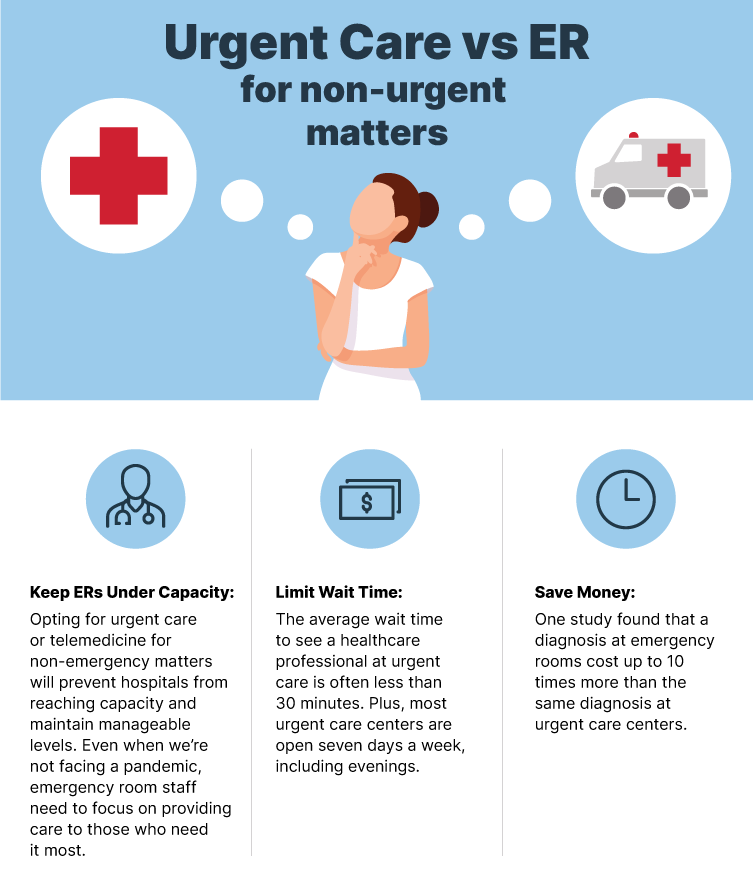
Choosing between urgent care and the emergency room can be a life-saving decision. Learn the key differences, costs, and scenarios to make the best choice for your health.
Understanding Urgent Care and Emergency Rooms: The Basics
Choosing the right healthcare facility can be a daunting task, especially when you're in a stressful medical situation. Many people are aware that urgent care centers and emergency rooms (ERs) serve different purposes, but understanding when to choose one over the other can be confusing.
Urgent care centers are designed to handle non-life-threatening medical issues that require prompt attention but aren't severe enough to warrant an ER visit. On the other hand, ERs are equipped to manage severe and life-threatening conditions that need immediate and advanced medical intervention.
Key Differences That Matter: Severity, Cost, and Wait Times
Severity of Conditions Treated: Urgent care centers are ideal for minor injuries such as sprains, strains, minor fractures, and common illnesses like the flu, sore throats, and infections. ERs, however, are meant for serious emergencies like chest pain, stroke symptoms, severe bleeding, and major trauma.
Cost and Insurance Considerations: Generally, urgent care visits are significantly less expensive than ER visits. Insurance coverage also varies, with many plans offering lower copays for urgent care. ER visits can be costly, especially if the condition is not deemed an emergency by your insurance provider.
Wait Times and Accessibility: Urgent care centers typically have shorter wait times compared to ERs, where critical cases are prioritized. Urgent care facilities are often more accessible, with many offering extended hours and being located in convenient areas.
Real-Life Scenarios: Where Should You Go?
Minor Injuries: Imagine you're on a weekend hike and you sprain your ankle. The pain is manageable, but you need medical attention. An urgent care center is your best bet. They can provide X-rays and treatment for such injuries in a timely manner.
Common Illnesses: After office hours, you develop a high fever and a sore throat. These symptoms are concerning but not life-threatening. An urgent care center can diagnose and treat common illnesses like these, often with shorter wait times than the ER.
Serious Emergencies: You suddenly experience chest pain and shortness of breath. These are potential signs of a heart attack, and you should head straight to the ER. Emergency rooms are equipped to handle life-threatening conditions with the necessary diagnostic tools and specialists on hand.
Pediatric Concerns: Your child has a persistent cough and difficulty breathing. While urgent care can handle many pediatric issues, difficulty breathing warrants an ER visit to ensure your child gets the comprehensive care they need.
Allergic Reactions: You have a known allergy and start experiencing hives and swelling after exposure. If the reaction includes difficulty breathing or swelling of the face and throat, go to the ER immediately. For milder reactions, urgent care can provide the necessary treatment.
Your Decision-Making Checklist: Tips for Choosing the Right Facility
Assess the severity of the condition: Is it life-threatening? If yes, go to the ER.
Consider the symptoms: Are they manageable or severe? Severe symptoms should be treated in the ER.
Think about costs and insurance: Urgent care is generally less expensive and may be a better option for minor issues.
Evaluate wait times: If the condition is not critical and you prefer a shorter wait, urgent care might be more suitable.
Proximity and accessibility: Choose the facility that's closer and more convenient if the condition is not life-threatening.
Empower Your Health Choices: Final Takeaways
Making the right choice between urgent care and the ER can have a significant impact on your health, costs, and overall experience. Remember to assess the severity of your condition, consider costs and insurance coverage, and think about wait times and accessibility.
By understanding these key differences and keeping the decision-making checklist in mind, you can make informed choices that ensure you receive the appropriate care promptly. Share this information with friends and family to help them make better healthcare decisions too.
